Directions (1 – 5): Bar chart given below shows total students (in thousand) in five different state board and percentage of girls in these state boards, while table shows percentage of boys appeared in exam and ratio of boys to girls appeared in exam. Read the data carefully and answer the questions.
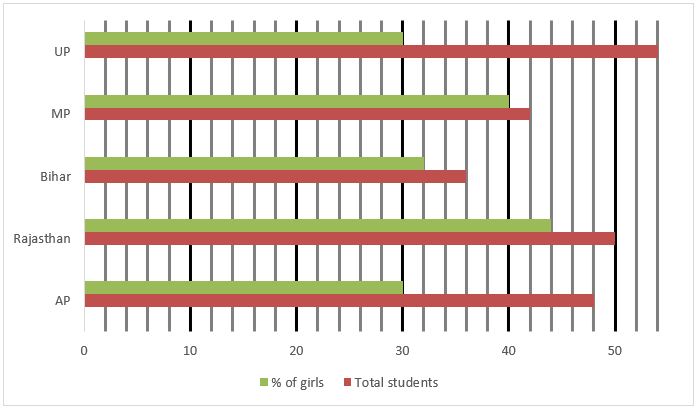
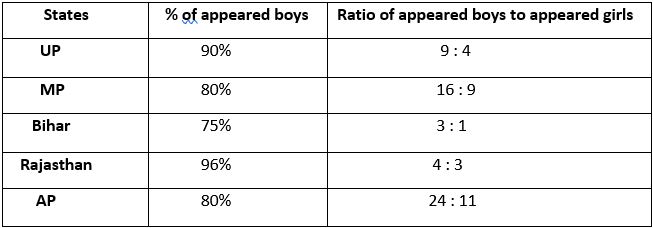
Q1. Find the difference between girls appeared in exam from AP and that of from UP?
(a) 2400
(b) 2800
(c) 2000
(d) 3200
(e) 3600
Q2. What is the percentage of girls appeared in exam from Bihar?
(a) 52.125%
(b) 55.125%
(c) 54.125%
(d) 53.125%
(e) None of these
Q3. Find the ratio of total girls appeared in exam from MP to total boys appeared in exam from AP?
(a) 37 : 79
(b) 31 : 57
(c) 21 : 40
(d) 25 : 61
(e) 27 : 64
Q4. Total girls appeared in the exam from Rajasthan are what percent less than total boys from that state?
(a) 24%
(b) 25%
(c) 30%
(d) 32%
(e) 28%
Q5. Find the average number of boys appeared in the exam from Bihar & MP?
(a) 19260
(b) 19140
(c) 19360
(d) 19280
(e) 19440
Directions (6-10): Read the given information carefully and answer the following questions.
A boat covers certain distance of it’s journey in three parts i.e. upstream, downstream and in still water. Ratio of distance covered in downstream to upstream is 7:3 and total distance covered is 375 km. When boat goes downstream it consume 25% less fuel per km and while moving in upstream it consumes 12 ½ % more fuel per km than that of in still water and it cover 175km in still water. Now, after reaching its destination, boat returns to initial point covering the same path and it takes 10/3 lit more fuel in return journey.
Q6. If in return journey boat takes 5hr 30 min more to cover upstream than downstream and speed of boat in downstream is 40km/h, then find speed of boat in upstream?
(a)10 km/h
(b)15 km/h
(c)20 km/h
(d)25 km/h
(e)None of these.
Q7. How much fuel is consumed in covering downstream distance in whole journey? (approx.)
(a)15 lit
(b)17 lit
(c)18 lit
(d)12 lit
(e)10 lit
Q8. Total Distance covered in still water is how much percent more or less than total distance covered in upstream in whole journey?
(a)50%
(b)100%
(c)150%
(d)75%
(e)125%
Q9. What is the rate of consumption of fuel of boat in upstream?
(a)7 km in 1 lit
(b)8 km in 1 lit
(c)10 km in 1 lit
(d)12 km in 1 lit
(e)9 km in 1 lit
Q10. If fuel costs 81 rupee per liter, then find money spent on fuel to cover distance still in water in return journey?
(a)Rs. 1550
(b)Rs. 1575
(c)Rs. 1350
(d)Rs. 1275
(e)Rs. 1250
Directions (11-15):- Pie chart given below gives information about total no. of students who appeared in six different exams i.e. railway, ctet, cgl, chsl, cpo and banking exams and table given below gives ratio of students belonging to general, obc and other category out of who have appeared in exam. If 50000 students applied for exam and only 60% appeared in exams.
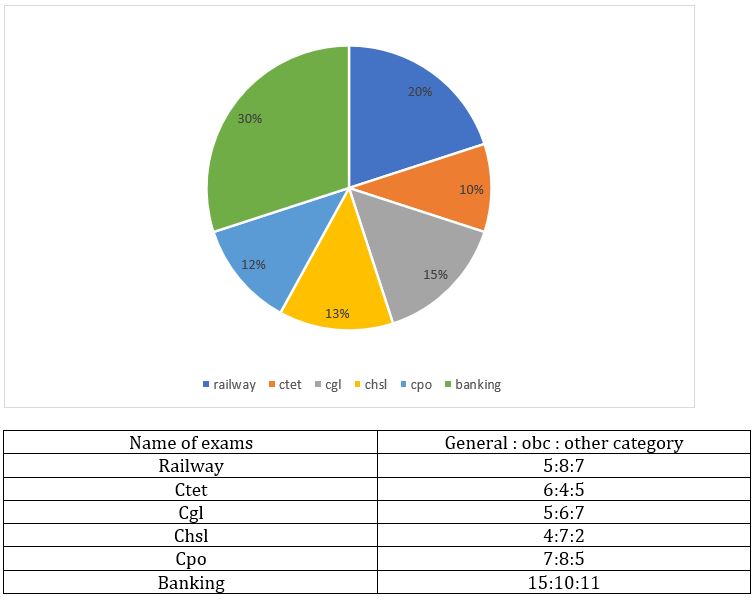
Q11. In banking exams total 1330 students have passed and from general and obc category 20% and 10% of the students were able to pass the exams respectively. Find what percent students of other category passed the banking sector exam.
(a) 22%
(b) 14%
(c) 11%
(d) 12%
(e) 9%
Q12. What is the ratio of students belonging to general category and appeared in cgl exam to students belonging to other category and appeared in cpo exam?
(a) 25:13
(b) 25:18
(c) 18:13
(d) 28:19
(e) 19:18
Q13. What is the average of total no. student belonging to obc category who appeared in all exam?
(a) 1790
(b) 1793
(c) 1795
(d) 1800
(e) 1805
Q14. If no. of students appeared in banking exam from general category is 15% of total students applied for all the exams from urban area, then find no. of students applied for all the exams belonging to rural area?
(a) 5000
(b) 30000
(c) 15000
(d) 10000
(e) 25000
Q15. Total no. of students appeared in railway exam are what part of total students who did not appear in any exam.
(a) 40%
(b) 30%
(c) 50%
(d) 20%
(e) 25%
Solutions
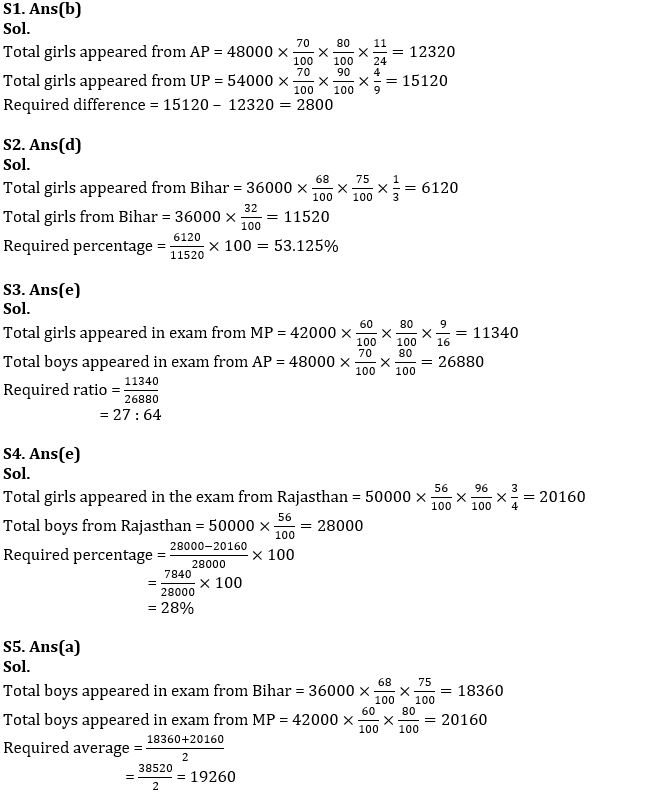
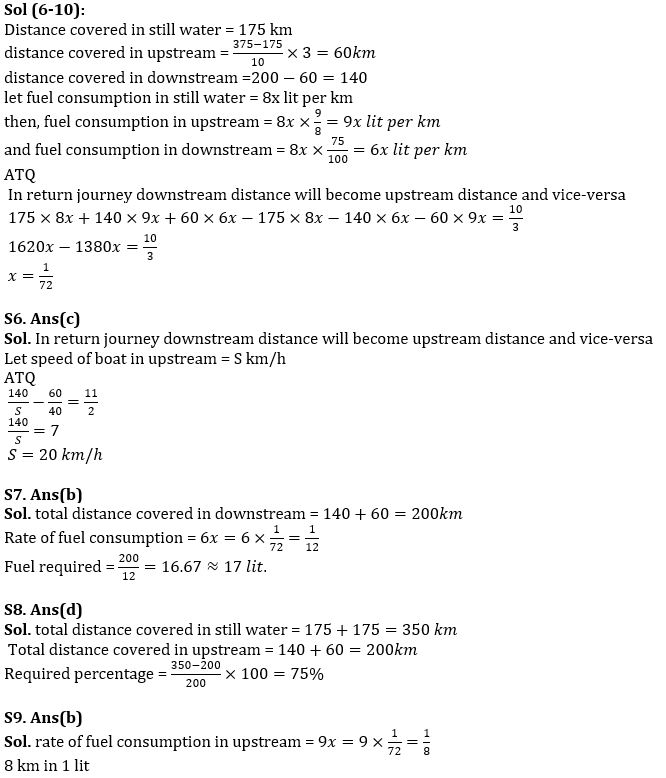
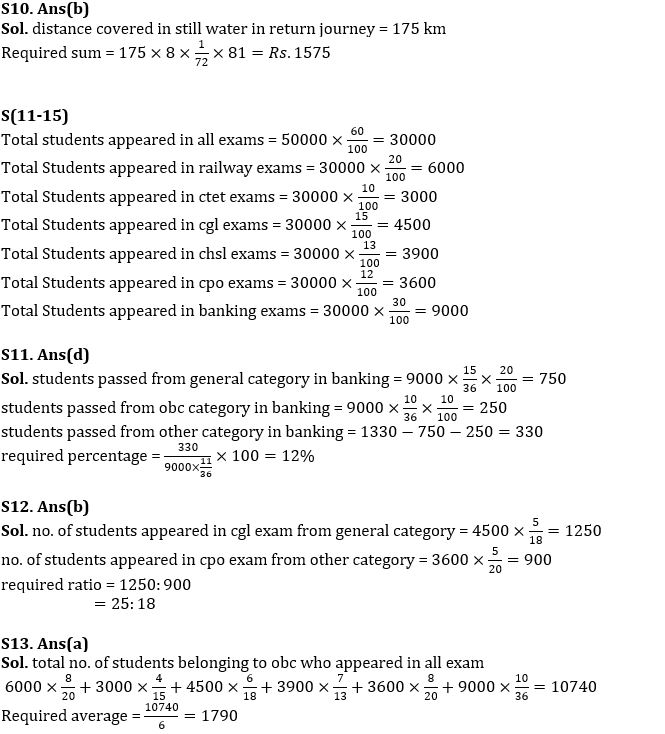



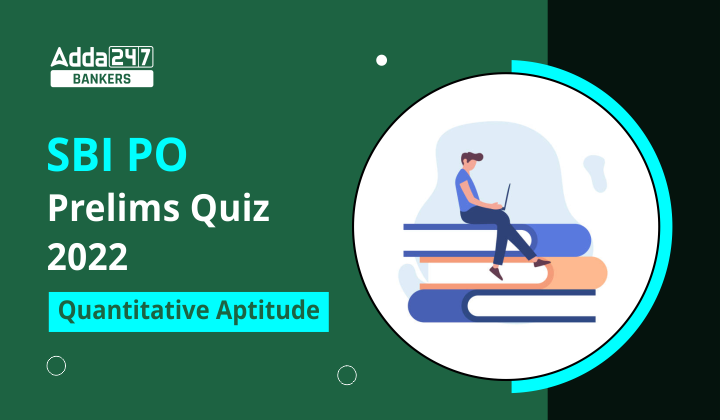


 Quantitative Aptitude Quiz For Bank Main...
Quantitative Aptitude Quiz For Bank Main...
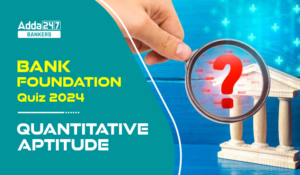 Quantitative Aptitude Quiz For Bank Foun...
Quantitative Aptitude Quiz For Bank Foun...







